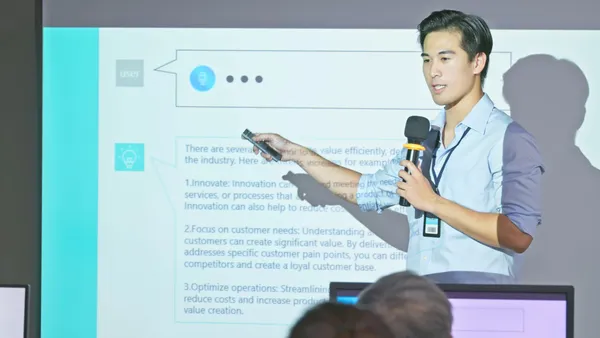With any change comes the fear of the unknown, but this is especially true when it comes to artificial intelligence. Universities today have so much to gain by leveraging AI across the student lifecycle, but many are hesitant.
Taking a step back, this somewhat nebulous concept of AI is already taking root in our everyday lives in so many forms. Today, you can wake up with a reminder and a playlist of your favorite motivational morning music via a voice-activated assistant, then get traffic advice on your way to work from a maps app. A quick tap on a suggestion based on previous purchases, and your favorite variety of coffee is waiting at your favorite store, already paid for in-app.
While these examples come from consumer applications, higher education can – and should – benefit from artificial intelligence, too.
But many universities are grappling with how to get started with AI and how to use it ethically and effectively. And not only that — institutions are also responsible for teaching this new technology to students and preparing them for a future where they’ll be working alongside artificial intelligence for the rest of their lives.
Any implementation of artificial intelligence starts with a use case. What is the problem you want to solve and where does it fit in the student lifecycle? This will tell you what insights you'll need, what predictions you’ll want to review, and how you can work with your team to improve the student experience at scale. Establish what you want to accomplish, then make sure you include all the necessary stakeholders who might have data on that student, from people like advisors and administrators, to student housing and more.
Here are just a few ways AI is expected to change the landscape in higher ed:
-
It can empower institutions to pinpoint student issues earlier and intervene proactively.
-
Machine-learning algorithms could help model the ideal student profile, and recruit matching prospects with extreme precision.
-
AI can be used to predict the likelihood of a student engaging with an email or to gain deeper insights into how prospects are talking about your institution on social media through intelligent sentiment analysis.
-
AI can recommend next best actions for your recruiting, advising and alumni engagement teams based on intelligent insights and pattern recognition.
-
Across every department and throughout the lifecycle, AI-powered bots and assistants could take on more daily tasks, so staff can focus on what matters most: student success.
The good news is that higher ed has an advantage when it comes to getting started with AI given the amount of constituent data already stored by institutions. By bringing all of that data into one place with a CRM platform like Salesforce.org Education Cloud, institutions can capture a true 360 degree view of the student across the entire lifecycle. This means institutions will be able to spend less time gathering data and more time personalizing the student experience at scale. By integrating student data across campus with SIS, LMS, financial aid data and more, higher ed institutions are able to move from systems of record to systems of engagement and intelligence. Connected student data creates the foundation for AI to do it’s magic - from discovering student insights, to predicting outcomes, recommending next steps and automating workflows across campus.
Want to learn more about AI for higher ed? AI experts, thought leaders, and higher ed Trailblazers all joined Salesforce.org’s AI for Good Week for Higher Education to share their insights on AI, how it can transform the student experience, and most importantly, how you can get started with AI at your institution. In case you missed it, here are the top 5 higher ed learnings from AI for Good Week.










